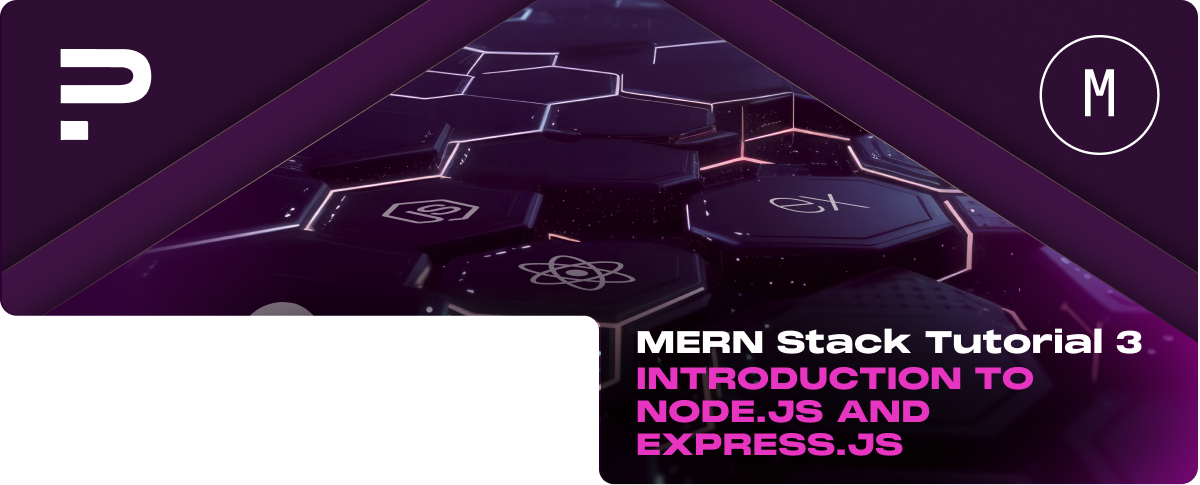Introduction to Server-Side Development
Server-side development is an important component of web development, responsible for managing the logic, database interactions, authentication, and server configuration that support web applications and services.
Unlike client-side development, which focuses on what users interact with directly in their web browsers, server-side development deals with the behind-the-scenes activities on the server. This includes serving web pages, executing app logic, performing database operations, and ensuring security and data integrity.
Overview of Server-Side Development and Its Importance
Server-side development plays an important role in creating dynamic, responsive, and secure web applications.
It enables developers to:
- Generate Dynamic Content: Server-side code can produce HTML dynamically, allowing web pages to reflect changes in data or user preferences.
- Handle Forms: Processing user input from forms securely, including login and data submission forms.
- Manage Sessions: Keeping track of users’ sessions across multiple requests, which is essential for personalized user experiences and security.
- Interact with Databases: Performing CRUD (Create, Read, Update, Delete) operations on databases to store and retrieve application data.
- Ensure Security: Protecting sensitive data from unauthorized access and attacks by implementing authentication and encryption.
Introduction to Node.js as a Server-Side Platform
Node.js has revolutionized server-side development by enabling developers to write server-side applications in JavaScript. This uniformity in programming language across both client and server sides simplifies development, especially for those already familiar with JavaScript for client-side development.
What is Node.js?
Node.js is an open-source, cross-platform JavaScript runtime environment that executes JavaScript code outside a web browser. Its non-blocking, event-driven architecture makes it particularly suited for building scalable network applications.
Why Use Node.js for Server-Side Development?
- Single Language Across Stack: Using JavaScript for both front-end and back-end development streamlines the development process and reduces the learning curve for new developers.
- High Performance: Node.js’s non-blocking I/O model provides high throughput and scalability, making it ideal for real-time applications and microservices.
- Rich Ecosystem: npm, Node.js’s package ecosystem, is the largest ecosystem of open-source libraries in the world, providing a wealth of tools and modules that can significantly speed up development.
- Versatility: Node.js can be used for building various types of applications, from web applications to RESTful APIs and microservices, and it’s supported on most platforms, including Windows, Linux, and macOS.
Getting Started with Node.js
Understanding Node.js
What is Node.js, and why use it?
Node.js is a runtime environment that allows you to run JavaScript on the server side. It’s built on Chrome’s V8 JavaScript engine, which compiles JavaScript directly to native machine code. This makes Node.js incredibly efficient and suitable for I/O-intensive operations.
It’s used for developing a wide range of server-side and networking applications. Its non-blocking, event-driven architecture enables it to handle numerous connections simultaneously, making it ideal for real-time applications, such as chat applications, live notifications, and online gaming.
The event-driven, non-blocking I/O model
Node.js operates on a single-thread, using non-blocking I/O calls, allowing it to support tens of thousands of concurrent connections without incurring the cost of thread context switching. The event-driven model means that when a Node.js application needs to perform an I/O operation, instead of blocking the thread and waiting for it to complete, the operation is offloaded and the rest of the code continues to execute.
When the I/O operation finishes, a callback function is executed to handle the result. This model is highly efficient for web servers that handle a large number of simultaneous connections with high throughput.
Installing and Running Your First Node.js Application
Writing a simple "Hello World" server:
- First, ensure you havejs installed on your system. You can download it from the official Node.js website.
- Create a new file named js (or any name you prefer) and open it in a text editor.
- Paste the following code into js:
const http = require(‘http’);
const hostname = ‘127.0.0.1’;
const port = 3000;
const server = http.createServer((req, res) => {
res.statusCode = 200;
res.setHeader(‘Content-Type’, ‘text/plain’);
res.end(‘Hello World\n’);
});
server.listen(port, hostname, () => {
console.log(`Server running at http://${hostname}:${port}/`);
});
Running the application and understanding the server code:
1. Open a terminal or command prompt.
2. Navigate to the directory where js is located.
3. Run the application by typing:
node app.js
4. Open a web browser and visit http://127.0.0.1:3000/. You should see a message saying “Hello World”.
The code you just ran creates a basic web server that listens on port 3000. When you access the server through a web browser, it responds with “Hello World”. This simple example demonstrates how to use Node.js to handle HTTP requests and responses, foundational for building web applications and APIs.
Introduction to Express.js
What is Express.js?
Express.js is a web application framework for Node.js, designed for building web applications and APIs. It simplifies the server creation process that’s already available in Node.js, making it easier and faster to write your backend code. It provides a robust set of features to develop both web and mobile applications and is widely regarded as the standard server framework for Node.js.
The role of Express.js in web development
Express.js plays an important role in the web development process, acting as the backend part of the MEAN (MongoDB, Express.js, AngularJS, and Node.js) and MERN (MongoDB, Express.js, React, and Node.js) stack applications. It helps handle routes, requests, and views and integrates with databases seamlessly. It provides a thin layer of fundamental web application features without obscuring Node.js features, allowing developers to build complex applications easily.
Advantages of using Express.js with Node.js
- Simplicity: This makes the process of building server-side applications simpler and faster.
- Middleware: Utilizes middleware to respond to HTTP/RESTful requests, making organizing your application’s functionality easier with reusable code.
- Routing: Offers a powerful routing API to manage actions based on HTTP methods and URLs.
- Integration: It easily integrates with databases like MongoDB and templating engines like Pug (formerly Jade) or EJS, providing a complete backend solution.
- Community Support: It has a large community, offering many plugins and middleware, making adding features to your application easier.
Creating Your First Express Application
Setting up an Express project:
- Make sure you have js installed.
- Open your terminal or command prompt.
- Create a new directory for your project and navigate into it.
- Initialize a new Node.js project by running npm init. Follow the prompts to set up your project.
- Install Express.js by running npm install express.
Building a basic web server with Express:
1. Create a file named js in your project directory.
2. Open js in a text editor and add the following code:
const express = require(‘express’);
const app = express();
const port = 3000;
app.get(‘/’, (req, res) => {
res.send(‘Hello World with Express!’);
});
app.listen(port, () => {
console.log(`Example app listening at http://localhost:${port}`);
});
3. Run your application by executing node js in the terminal.
4. Open a web browser and navigate to http://localhost:3000/ to see your application respond with “Hello World with Express!“.
This example demonstrates the simplicity of setting up a web server with Express.js. The app.get method defines a route for the root URL (/) and sends a response back to the client.
Building a RESTful API with Express.js
Understanding RESTful Services
REST, which stands for Representational State Transfer, is an architectural style defining a set of constraints for creating web services.
Key principles include:
- Statelessness: Each request from client to server must contain all the information needed to understand and complete the request. The server does not store session information.
- Client-Server Separation: The client and server applications act independently, improving portability and scalability across various platforms by simplifying the server components.
- Uniform Interface: A uniform way of interacting with the server ensures that the API is decoupled from its implementation, allowing each part to evolve independently.
- Cacheable: Responses must define themselves as cacheable or not to prevent clients from reusing stale or inappropriate data.
Why REST is Popular for API Development
REST’s simplicity, scalability, and statelessness align well with the needs of modern web applications and services, making it a popular choice for API development. It uses standard HTTP methods, making it easy to implement and understand. Additionally, REST can be used over nearly any protocol and returns data in a format that’s easy to integrate with client-side applications, such as JSON.
Developing Your First REST API
Defining Routes and HTTP Methods (GET, POST, DELETE, PUT)
Express.js simplifies the process of defining routes and handling HTTP requests. Routes are used to determine how an application responds to client requests to a particular endpoint, which is a URI (or path) and a specific HTTP request method (GET, POST, DELETE, PUT).
Handling Requests and Sending Responses
Express provides request objects (req) and response objects (res) in route handlers, which contain data about the request and methods to send the response back to the client.
Testing Your API with Postman
Postman is a powerful tool for testing API endpoints, allowing you to send requests to your API and view the responses easily.
Step-by-Step Guide to Building a Basic RESTful API with Express.js
1. Initialize a New Node.js Project:
- Create a new directory for your project and navigate into it.
- Run npm init -y to create a json file with default values.
2. Install Express.js:
- Install Express by running npm install express.
3. Create Your Server File:
- Create a file named js (or any name you prefer) in your project directory.
- Import Express and initialize your app:
const express = require(‘express’);
const app = express();
4. Define Routes:
- Use Express to define a simple GET route:
app.get(‘/’, (req, res) => {
res.send(‘Hello World!’);
});
5. Start Your Server:
- Add a listener to start your server on a specific port, e.g., 3000:
app.listen(3000, () => {
console.log(‘Server is running on http://localhost:3000’);
});
6. Run Your Application:
- Start your application by running node js in the terminal. Navigate to http://localhost:3000 in your browser or use Postman to make a GET request to the same URL. You should see “Hello World!” as the response.
7. Expanding Your API:
- Add more routes for different HTTP methods and paths. For example, to add a POST route:
app.post(‘/message’, (req, res) => {
// Logic to handle POST request
res.send(‘Message received’);
});
8. Testing with Postman:
- Open Postman: Launch the Postman application on your computer.
- Create a New Request: Click on the “New” button or find the option to create a new request.
- Choose the Type of Request: In the request setup, you can select the type of HTTP request you want to make (GET, POST, PUT, DELETE, etc.) from a dropdown menu.
- Enter Your Endpoint URL: Type the URL of the API endpoint you wish to test into the URL field. This is the address to which Postman will send the request.
- Send the Request: Click the “Send” button to make the request to your API.
- Review the Response: Once the request is made, Postman will display the response returned by your API. This includes any data sent back, the status code, headers, and so on.
Connecting Express.js to MongoDB
Introduction to MongoDB and Mongoose
Why MongoDB is a Great Choice for Express.js Applications
- Schema-less Nature: MongoDB is a NoSQL database that allows for flexible document structures. This flexibility makes it easier to evolve your data schema without the need for migrations.
- Scalability: MongoDB’s horizontal scalability supports the growth of applications with ease.
- JSON Data Model: The JSON document model is a natural fit for JavaScript developers, making data easy to work with in Express.js applications.
- Rich Query Language: MongoDB offers a powerful and intuitive query language, allowing for complex queries and data aggregation.
Using Mongoose to Interact with MongoDB
Mongoose provides a straight-forward, schema-based solution to model your application data. It includes built-in type casting, validation, query building, and business logic hooks.
Setting Up Mongoose in Your Express Application
1. Installing and Configuring Mongoose:
- First, add Mongoose to your project by running npm install mongoose.
- In your Express app, require Mongoose and connect to your MongoDB database:
const mongoose = require(‘mongoose’);
mongoose.connect(‘mongodb://localhost/my_database’, {
useNewUrlParser: true,
useUnifiedTopology: true
});
2. Defining Schemas and Models for Your Data:
- Define a schema that describes the structure of the data in MongoDB.
- Create a model based on that schema which will be used to interact with the database.
const Schema = mongoose.Schema;
const blogSchema = new Schema({
title: String,
author: String,
body: String,
comments: [{ body: String, date: Date }],
date: { type: Date, default: Date.now },
hidden: Boolean,
meta: {
votes: Number,
favs: Number
}
});
const Blog = mongoose.model(‘Blog’, blogSchema);
CRUD Operations with Mongoose
Implementing Create, Read, Update, and Delete Operations in Your API
1. Create:
- To add a new document to the database, use the model’s save method or create method directly.
const newBlog = new Blog({ title: ‘Mongoose Guide’, author: ‘John Doe’ });
newBlog.save((err) => {
if (err) return handleError(err);
// saved!
});
// Or use create
Blog.create({ title: ‘Mongoose Guide’, author: ‘John Doe’ }, (err, blog) => {
if (err) return handleError(err);
// created!
});
2. Read:
- Mongoose models provide several static helper functions for retrieving documents from the database.
Blog.find({ author: ‘John Doe’ }, (err, blogs) => {
if (err) return handleError(err);
// blogs is an array of instances of the Blog model
});
3. Update:
Use model methods like updateOne, updateMany, or findByIdAndUpdate to update documents.
Blog.findByIdAndUpdate(blogId, { title: ‘Updated Title’ }, (err, blog) => {
if (err) return handleError(err);
// blog is the document _before_ it was updated
});
4. Delete:
To remove documents, use methods like deleteOne or deleteMany.
Blog.deleteOne({ _id: blogId }, (err) => {
if (err) return handleError(err);
// deleted
});
Middleware in Express.js
Middleware in Express.js is a powerful feature that acts as a bridge between the request and response cycle. Middleware functions can execute code, change the request and response objects, end the request-response cycle, and call the next middleware function in the stack. They are used for various purposes, such as logging, parsing request bodies, authentication, and more.
Middleware functions are:
- Functions that have access to the request object (req).
- The response object (res).
- The next middleware function in the application’s request-response cycle.
- The next middleware function is commonly denoted by a variable named next().
Middleware can perform the following tasks:
- Execute any code.
- Make changes to the request and the response objects.
- End the request-response cycle.
- Call the next middleware in the stack.
If the current middleware function does not end the request-response cycle, it must call next() to pass control to the next middleware function. Otherwise, the request will be left hanging.
Common Use Cases for Middleware
Middleware can be used for:
- Logging requests to the console or to a file.
- Authenticating users and managing sessions.
- Parsing the body of requests to extract form data or JSON payloads easily.
- Setting response headers (e.g., for security, caching).
- Handling errors and formatting error messages.
Implementing Custom Middleware
To create custom middleware, you define a function that takes three arguments: req, res, and next.
Here’s an example of a simple custom middleware function that logs the request method and the URL:
const express = require(‘express’);
const app = express();
// Custom middleware that logs the request method and URL
const logger = (req, res, next) => {
console.log(`${req.method} ${req.url}`);
next(); // Call the next middleware in the stack
};
// Apply the middleware
app.use(logger);
// Routes
app.get(‘/’, (req, res) => {
res.send(‘Home Page’);
});
app.get(‘/about’, (req, res) => {
res.send(‘About Page’);
});
// Start the server
app.listen(3000, () => {
console.log(‘Server is running on http://localhost:3000’);
});
Utilizing Built-in and Third-Party Middleware
Express comes with built-in middleware functions, such as express.static for serving static files and express.json() for parsing JSON request bodies.
Third-party middleware also extends the functionality of Express applications. For example, body-parser (now part of Express) for parsing request bodies, or cors for enabling Cross-Origin Resource Sharing.
To use third-party middleware, you first need to install it via npm and then require it in your application file. After that, you use app.use() to add it to the middleware stack.
const express = require(‘express’);
const cors = require(‘cors’); // After installing via npm
const app = express();
// Use CORS middleware for all routes
app.use(cors());
// Now your Express app can handle CORS requests.
By strategically implementing and combining middleware, you can significantly enhance the functionality, security, and performance of your Express.js applications.
Error Handling and Debugging
Error handling and debugging are important to developing robust Node.js and Express applications. They help ensure that your application behaves as expected and that you can quickly identify and resolve issues when they arise.
Basic Error Handling in Express.js
In Express, errors can be handled using middleware that catches both synchronous and asynchronous errors. Express distinguishes between standard middleware and error-handling middleware by the number of arguments the function takes. Error-handling middleware functions take four arguments: err, req, res, and next.
Handling Synchronous Errors
Synchronous errors that occur in your route handlers or middleware can be caught by Express automatically. However, if you want to create a custom error response, you can use the next() function to pass errors to the next error-handling middleware.
app.get(‘/’, (req, res, next) => {
// Simulate a synchronous error
const err = new Error(‘Something went wrong!’);
next(err);
});
Handling Asynchronous Errors
Asynchronous errors require more care since they occur outside the regular execution flow. In Express versions prior to 5, you would need to catch these errors and pass them to the next() fucntion manually. With Express 5 (currently in alpha), asynchronous errors are caught automatically if you return a promise from your middleware or route handler.
For earlier versions, or if you prefer explicit error handling:
app.get(‘/’, async (req, res, next) => {
try {
// Simulate an asynchronous operation
await someAsyncOperation();
} catch (err) {
next(err);
}
});
Creating Error-Handling Middleware
To create error-handling middleware, you define a function with four parameters. This middleware should be added at the end of all other middleware and routes to catch any errors in the application.
app.use((err, req, res, next) => {
console.error(err.stack);
res.status(500).send(‘Something broke!’);
});
Debugging Your Node.js and Express Applications
Effective debugging is key to identifying and solving problems in your application. Here are some tips and tools for debugging:
Tips for Effective Debugging
- Use log or console.error to print debugging information to the console.
- Structure your code into small, manageable pieces to make identifying the source of errors easier.
- Pay attention to the call stack in error messages; it can give you clues about where the problem occurred.
Tools for Debugging
- js Inspector: Node.js includes a built-in debugger accessed via the Chrome DevTools. You can start your application with node –inspect to enable debugging.
- Visual Studio Code: VS Code has excellent support for debugging Node.js applications. You can set breakpoints, inspect variables, and step through your code.
- Postman: For testing and debugging your API endpoints, Postman allows you to send requests and inspect responses without using a frontend.
// Example of using Node.js Inspector
node –inspect index.js
Incorporating structured error handling and utilizing debugging tools will help maintain the reliability of your Express applications and improve your efficiency in diagnosing and fixing issues.




































